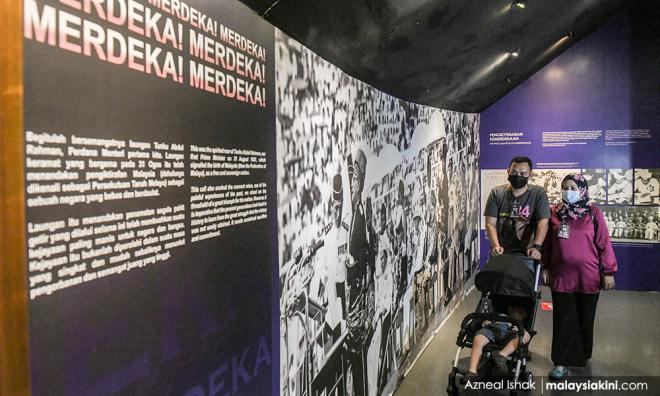
My primary school, Brickfields, School (2), took in its first students, me too, in 1957.
For the first eight months of my Standard One, the students would assemble on Monday mornings in front of three flagpoles in front of the school, and squeakily pipe or belt out “God Save the Queen”, followed by the “Negara Ku”, while the Union Jack, flanked by the Malayan flag and the Selangor flag, edged its jerky way up the centre flagpole, the students so tasked trying to time the arrival of the flags at the top with the end of the second anthem, miscalculations turning a regal saunter of the flags into an undignified rush.
On the first Monday of September 1957, what Merdeka meant for us seven-year-old kids was that from then on Monday morning’s musical preamble was shortened with the absence of the Union Jack and the prayer that God will save the Queen. We will pray for other things now.
Then, I lived in Rozario Street, about half a kilometre from my school, in a hive of Morris-Minor government servants, the cluster of government houses known to all as Hundred Quarters.
Besides the football games in Chan Ah Tong field at the back, street games like "Police & Thief" or "Chopping" could involve a motley pack of over a dozen kids, mainly Indian boys, but nobody had coloured our minds about race. My neighbour, my closest partner-in-mischief, was Jeyatharen (a cousin of Citizen Nades).
Sure, there were the usual spats, tiffs, the don’t-friend-you periods, but the disagreements were always personal, and as transient as quicksilver youthful focus, never racial. Nobody found “babi” contentious or provocative, you call me that, I call you other things. In our innocence, words had no weight, except those that referred to our mother’s body part.
That innocence seemed reflected in the national scene and politics - Tunku Abdul Rahman, Tan Cheng Lock, VT Sambanthan, Umno, MCA, MIC, representing a harmony of purpose in Malayans charting the Malayan destiny.

That unity was vital because the country was still dealing with the violent resistance of communists, and later, we had to be vigilant during Konfrontasi, watching out for raiders crossing the Straits of Malacca, or hacking their way over the border in Kalimantan, because president Sukarno had sulked over the formation of Malaysia.
That racial idyll lasted a dozen years, rent into bloody strips in May 1969, and it’s never been the same again.
Now, 63 years later, I live in a condo that looks out on the tangled, riotous green of the Bukit Gasing forest reserve. I am on greeting terms with a couple of families on my floor, but we know nothing about each other’s lives, no don’t-say-I-tell-you gossipy scandal, we do not visit each other’s homes on festive days and snack on festive cookies. Anti-social distancing was a way of life before the virus.
Now, 63 years later, we have a wealth of politicians and political parties - Umno behaves like it is still the top dog, MCA and MIC can literally call themselves Bersatu, PAS shudders at sin everywhere, and a host of East Malaysian parties know East Malaysia determines the tilt of the balance of power.
The representation is almost even, sort of – Pakatan Harapan, sort of, can count on Dr Mahathir Mohamad and his few MPs, with an uneasy, bristly triumvirate of Mahathir, Anwar Ibrahim and Shafie Apdal warily eyeing each other, while on the other side, Bersatu may have been accepted into Muafakat Nasional by the leadership over vocal dissent from members, but only PAS has agreed to be part of the Perikatan Nasional coalition.
The lacklustre appeal of the so-called governing coalition is reflected in the limp logo that was unveiled. Nothing like antediluvian scales, a phallic rocket, a moon-struck white circle, no visual kitsch, just “Perikatan Nasional” on a blue background. How much did they pay for that so-called design? Whoever sold the design is a genius.
Ah, today politicians will be shovelling spade-loads of platitudes about national unity, flags will be fluttering on top of cars, but the healing of Malaysia will take much more than that from more of us before we end the blight of divisive pettifogging politicians.
My occasionally flagging, but still persisting optimism in Malaysians is backed by the many Malaysians I know and see in the streets of my country who have no problem getting on with each other, a comfortable to-each-his-own attitude without the angst of alienation.
THOR KAH HOONG is a veteran journalist. - Mkini
No comments:
Post a Comment
Note: Only a member of this blog may post a comment.